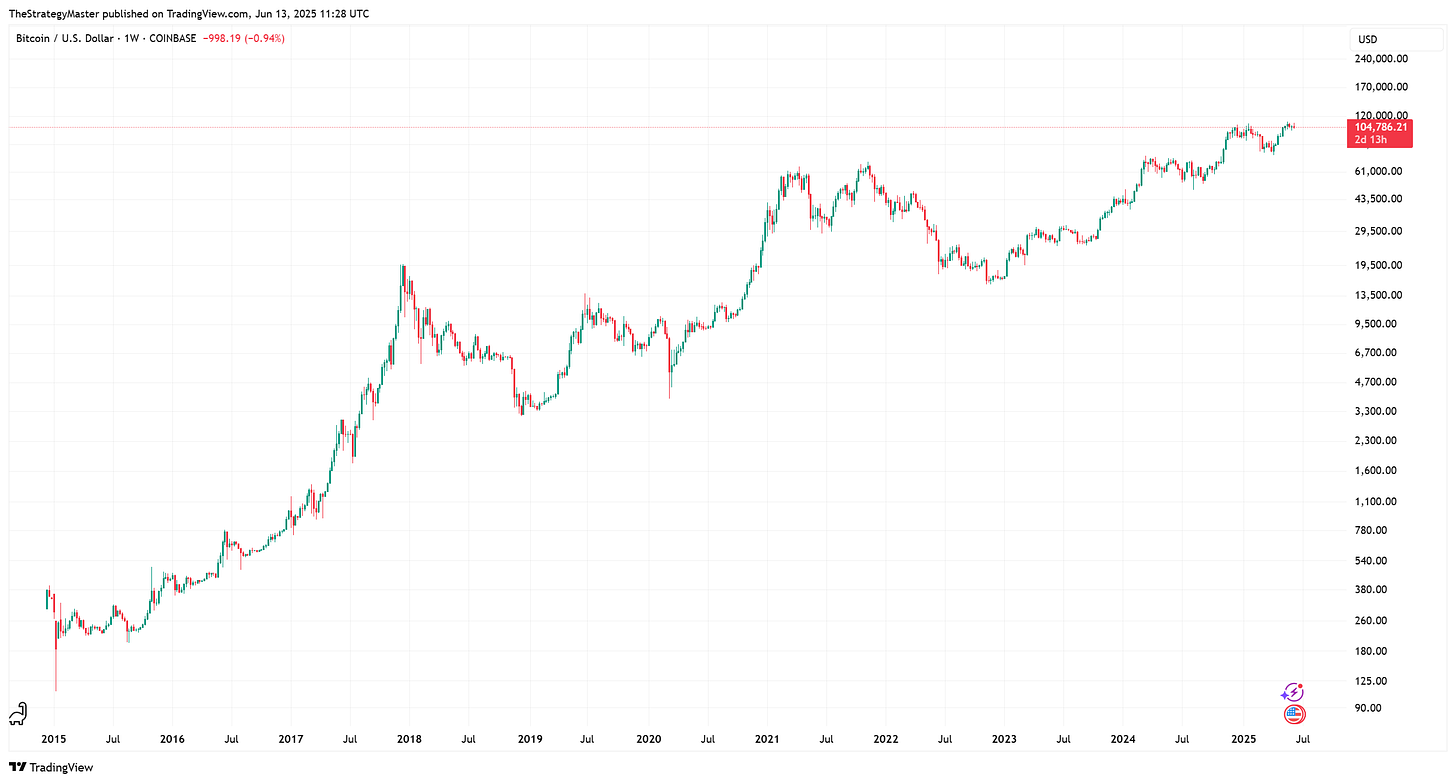I bet if you open your portfolio right now, I’ll find tokens from 2024—maybe even from 2023?
You’d probably tell me you still believe in these tokens, just waiting for the altcoin season to print that sweet 10x.
In other words: you're deep underwater, but your ego won’t let you sell.
But this article isn’t about that.
This article is about showing you why HODLing is one of the worst strategies in crypto—the kind that burns portfolios every single bull market, no matter what the YouTubers say.
Take a look at this hypothetical SOL portfolio built using a simple HODL (or DCA) approach:
That chart shows what a typical HODL portfolio looks like. And honestly, yours probably doesn’t look much better.
This is what happens to most average investors—they buy after prices pump and just hold as prices fall.
Now ask yourself: when you zoom out and look at your SOL purchases over the last 6 months… would you have done better?
Spoiler: If you followed cycles, you almost certainly would have.
Let’s continue with the HODL portfolio, and let’s break down the (example) purchases:
Average entry price: $180.54 per SOL (total cost $5,000 ÷ 27.70 SOL).
Time in market: ~6 months. No further action until your chosen evaluation date.
This is “typical” retail behavior
High conviction, no discipline. First buy is big ($2,000), then smaller, consistent contributions follow.
Zero timing. Entries hit some local highs (Dec 2024, Feb 2025) and some ugly lows (April’s $96 dip).
Ignore the drawdowns. SOL dropped to ~$96 intraday in April. The HODLer? Shrug and keep buying.
Now at –22%. $SOL currently sits at $144. The HODLer? Still holding. Still waiting. Still hoping.
And if SOL enters a bearish trend over the next 6 months? You’ll keep buying into oblivion with each paycheck?
These are the kinds of questions I ask people at crypto conferences when they explain their “HODL strategy.”
Because the truth is… most don’t have one. They buy when the news is good, sell when it’s bad.
That’s not a strategy. That’s a shortcut to getting rekt.
“But Master… what about Bitcoin?”
Fair question.
Here’s the one thing I agree with HODLers on: DCA into Bitcoin after pullbacks isn’t the worst idea.
Bitcoin has a 16-year track record of going up. Odds are, it’ll keep doing that. It’s a phenomenon: governments, funds, corporations, and regular people are piling in.
Sure, this might bring bigger recessions too, but long-term? Bitcoin looks strong.
But let’s be real: how many of you are only holding BTC?
Probably none. Most of us are deep in the altcoins, trying to outperform the market.
The Case for Cycle Strategies
I’ve spent years testing strategies—and putting real money behind them.
Most strategies work while the market goes up. But almost none help you know when to sell or sit on the sidelines.
There are “long-only” and “short-only” strategies, but what’s missing is a complete set of signals to tell you when the market is actually overbought or oversold. (And no, I’m not talking about RSI.)
Crypto runs on emotion—mostly greed.
That’s why you get explosive bull runs… and brutal bear markets where coins drop 90% in a year. (Yes, even ETH, SOL, LTC.)
HODLing worked in the early days. The first few cycles made people rich just by holding.
But we’re 15+ years into crypto. Today, smart investors are the ones making money.
Meanwhile, exchanges pushed us into derivatives, 100x leverage, staking, and other traps—just to bleed your account dry and make you deposit another paycheck next month.
They call it “Trading Volume.” The more you trade (read: lose), the fewer fees you pay—and suddenly, you’re a VIP. Ironic, isn’t it?
“Master, if your cycles can predict the buy zones—when’s the next one?”
Keep reading with a 7-day free trial
Subscribe to Strategy Master to keep reading this post and get 7 days of free access to the full post archives.








